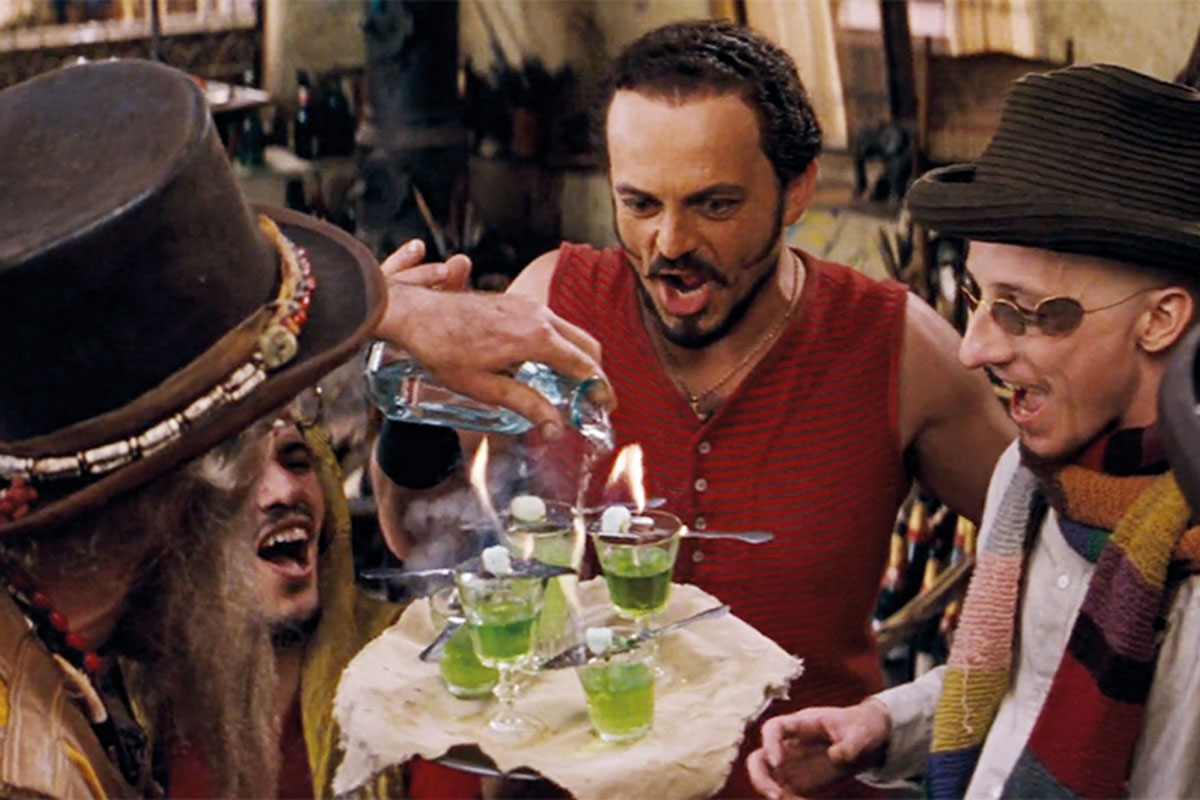
I am not a big fan of musical films. I have always been squeamish about people starting to sing in the middle of a dialogue as if it were the most normal thing in the world. In fact, this was one of the first problems musical films had to deal with: making sure that the musical performances did not slow down the action and make the film boring. The first film to integrate the musical parts as an essential part of the plot was On the town. Although I am not particularly a fan of the genre, I have to admit that some of the best films ever made are musicals. I cannot hide my weakness for Moulin Rouge, for example.
Moulin Rouge has the virtue of being a disruptive film. It is a musical shot at a time when musicals were not fashionable, and thanks to it, several others followed. Baz Luhrmann has the merit of managing to make a film with its own ground-breaking aesthetic based on foreign elements. The story is taken from Dumas’ La Dame aux Camélias and the libretto of La Traviata, and is not very original. Much of the soundtrack is covers of pop songs from the eighties and nineties, with some truly spectacular moments, such as the tango version of The Police’s «Roxanne» or Madonna’s «Like a virgin» performed by British actor Jim Broadbent. The setting of the film tries to recreate the bohemian Paris of the early 20th century, of course full of anachronisms and with an artistic direction that tries to make us believe that we are inside a painting by Toulouse-Lautrec, one of the characters in the plot. To recreate bohemian life, one of the common links of all the artists is that they drink absinthe, the cursed drink also known as the green fairy or the green devil.
Absinthe has a legend of being a dreadful drink. It was the drink of choice for artists with stormy lives such as Vincent van Gogh, Edgar Allan Poe, and Charles Baudelaire, and has been immortalised in works such as Picasso’s The absinthe drinker and Degas’ Absinthe. Its origin is uncertain. It is believed to have been invented in Switzerland at the end of the 18th century by Dr. Pierre Ordinaire, who may have taken the recipe from a convent of nuns where it was used as a medicine. It is basically a distillate of different herbs, most notably Artemisia absinthium (wormwood), which gives it its green colour and bitter taste. Wormwood contains several highly toxic molecules and some with hallucinogenic effects, hence its different properties. Perhaps this is why in Pego (Alicante, Spain) they used to make an absinthe called «La Loca» (“The Madwoman”).
The presence of toxic molecules was the argument behind the ban on absinthe in several countries until relatively recently. In the United States, for example, it was illegal until 2007. But is there any certainty about absinthe’s alleged properties as a narcotic or hallucinogen? Absinthe contains a molecule called thujone, which inhibits receptors for the neurotransmitter GABA in the brain, which would explain its effects. Some of the effects of thujone have been demonstrated, such as increasing physical activity in mice and acting as an antagonist to the effects of barbiturates. But… can we say that the effects of absinthe seen in Moulin Rouge were real? The answer is no. The drink does contain bioactive molecules, but they are in such ridiculously low concentrations that it is impossible for them to have any measurable effect. All the problems associated with drinking absinthe are due to the presence of a neurotoxic and carcinogenic component… alcohol. It is the very high alcohol content of absinthe (between 40 % and 70 %) that explains all the effects associated with the drink. The rest is just artistic licence.





